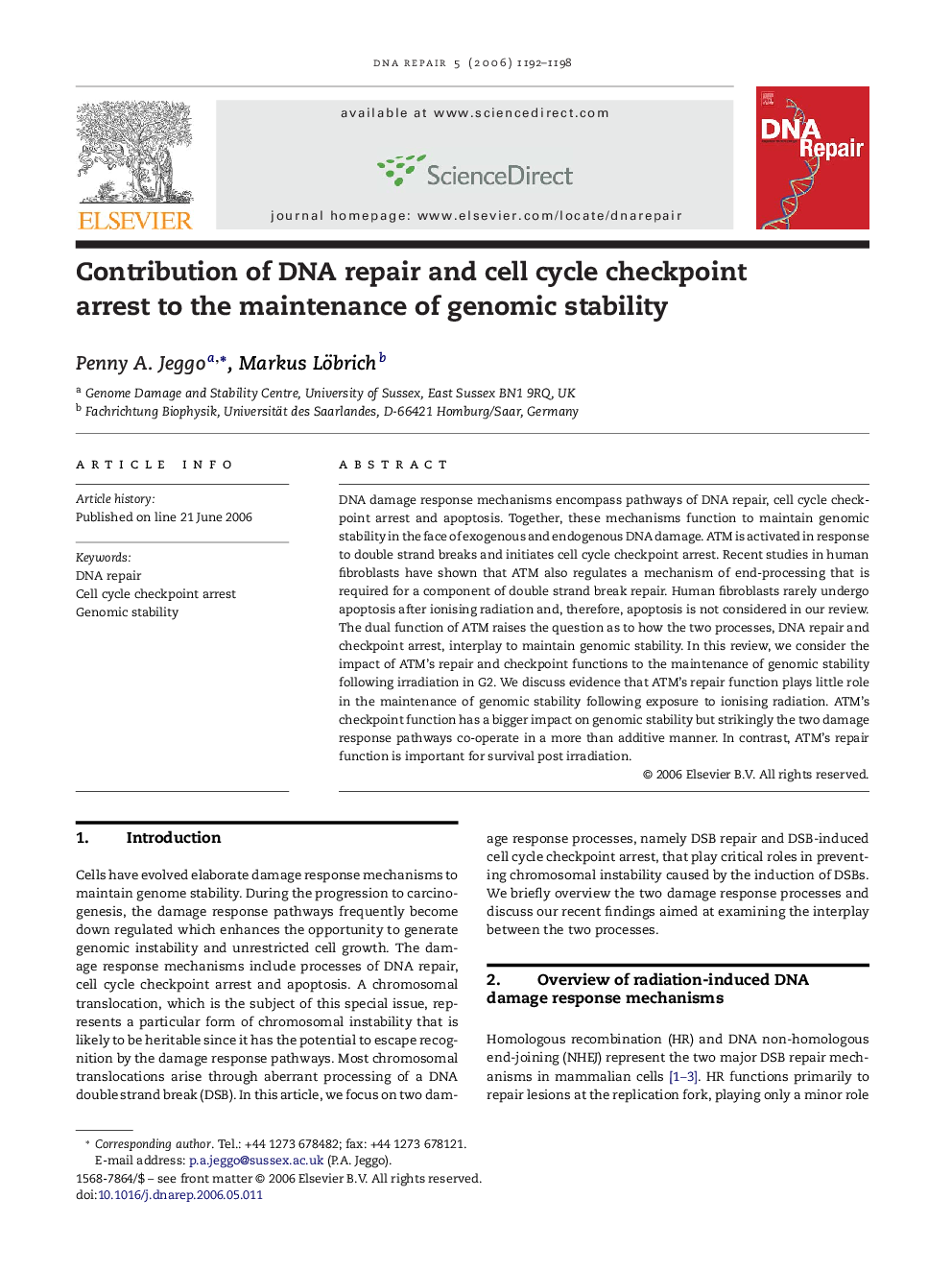| Article ID | Journal | Published Year | Pages | File Type |
|---|---|---|---|---|
| 1981103 | DNA Repair | 2006 | 7 Pages |
DNA damage response mechanisms encompass pathways of DNA repair, cell cycle checkpoint arrest and apoptosis. Together, these mechanisms function to maintain genomic stability in the face of exogenous and endogenous DNA damage. ATM is activated in response to double strand breaks and initiates cell cycle checkpoint arrest. Recent studies in human fibroblasts have shown that ATM also regulates a mechanism of end-processing that is required for a component of double strand break repair. Human fibroblasts rarely undergo apoptosis after ionising radiation and, therefore, apoptosis is not considered in our review. The dual function of ATM raises the question as to how the two processes, DNA repair and checkpoint arrest, interplay to maintain genomic stability. In this review, we consider the impact of ATM's repair and checkpoint functions to the maintenance of genomic stability following irradiation in G2. We discuss evidence that ATM's repair function plays little role in the maintenance of genomic stability following exposure to ionising radiation. ATM's checkpoint function has a bigger impact on genomic stability but strikingly the two damage response pathways co-operate in a more than additive manner. In contrast, ATM's repair function is important for survival post irradiation.
